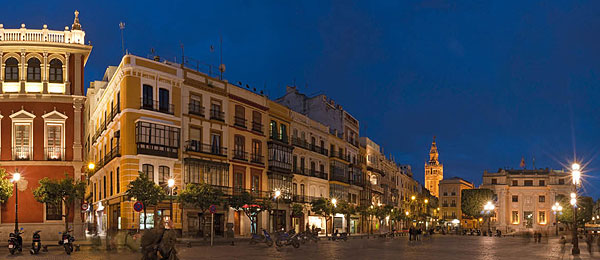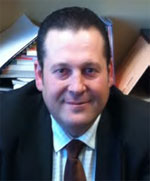A modest rise in figures recorded by Spain’s HVACR sector has to hope
A modest rise in figures recorded by Spain’s HVACR sector has led industry players in the country to hope that it is a precursor to a market surge. What factors can the sector capitalise on to make a complete recovery? What new technologies does the industry need to keep pace with the present challenges? Jerome Sanchez has the report.

The Spanish HVACR industry reportedly experienced considerable growth in the first half of the last decade. Formerly regarded as objects of luxury and privilege, air conditioning and heating equipment have now become common in households, buildings and facilities in the country.
Beginning in 2008, however, the industry started experiencing a downturn owing to the economic recession plaguing, not only Spain, but also the entire world. Reports cite that the precarious situation of the Spanish economy, combined with the housing mortgage crisis resulted in a decline in the sectors of air conditioning and heating, as a result of the decrease in spending and industrial activities.
 As Carlos Merino, Manager, GER, revealed: “We have noticed that enterprises do not invest money in non-vital things owing to the fact that the financial and economic situation need to improve. They only invest in those things that are really important. Say, in a farm. Owners will only heat those zones where heating is needed. They won’t invest in machines to heat the whole area.”
As Carlos Merino, Manager, GER, revealed: “We have noticed that enterprises do not invest money in non-vital things owing to the fact that the financial and economic situation need to improve. They only invest in those things that are really important. Say, in a farm. Owners will only heat those zones where heating is needed. They won’t invest in machines to heat the whole area.”
In 2010, numbers from the Asociación de Fabricantes de Equipos de Climatización (AFEC) showed signs of growth. The entire industry had a turnover of EUR 4.3 billion and gave jobs to around 25,000 people. These results represented a humble upturn compared to the past years, when increasing decline was noted. Heating and air conditioning were the primary contributors to the growth of the sector, with turnovers of approximately EUR 1.1 billion each. Refrigeration and industrial refrigeration sectors registered sales of EUR 560 million, with 80% attributed to exports.
Stalled growth
Numbers for 2011, however, showed yet another year of decline for the Spanish air conditioning sector. From an estimated EUR 1.1 billion in turnover in 2010, representing an increase of 1.6% from the figures in 2009, numbers for 2011 showed a decrease of 16.3% at approximately EUR 972.4 million.
Back to the drawing board
To combat the lingering crisis, one of the strategies adopted by the Spanish HVACR companies is to work towards improvement of the energy efficiency of their products. Sources suggest that they are also exploring using renewable energy – solar, geothermic and aerothermal, among others. In line with this, Merino spoke about GER’s new product: “We have a new product named WIN BIO, which works with biomass, and it is rocking the market. It is a symbol of what the market demands – cheaper alternatives to fossil fuels to make equipment work.”
He pointed out that energy efficiency was the main thrust of research of Spanish HVACR companies in the light of the economic downturn. “Harder times need more effectiveness and efficiency to maintain the industry and other different sectors,” said Merino. “GER spends and invests a lot of time researching to make improvements all the time. For us, quality, technology, efficiency and effectiveness are four basic elements in the equation of every single product that we manufacture.”
In terms of designing pieces of equipment with more energy efficiency, Merino emphasised that products by GER had been using IE2 engines since 2010. “IE2 is a classification of the energy efficiency of engines. There exists a directive from the EU that obliges companies to manufacture engines whose real performance [exceeds] approximately 90%,” Merino said. As a result, he added, products manufactured by GER were more efficient and, consequently, contributed to the improvement of energy efficiency of facilities.
Industry players believe that the HVACR industry in Spain has a great roadmap ahead. According to an article by Elena Cano, entitled “El sector de la climatización facturó 4.300 milliones de euros en 2010” that appeared in Mundo Empresarial Europeo, industry experts believed that, though the HVACR sector had already reached its maturity, it was still far from being saturated. In addition, the retrofit and the replacement market could prove to be a beacon of hope for the industry, since the number of obsolete equipment was increasing, and because there was a growing need to update these pieces of equipment, like changing the refrigerants used to more environmentally friendly ones.
A similar point was made by the article entitled “Aire Acondicionado: el mercado vuelve a crecer” that appeared in Protiendas. According to the article, industry players were of the opinion that retrofitting would prove to be relevant to the industry, as the construction of new buildings or facilities had come to a halt in recent years. It added that industry leaders believed that making “retrofitting plans” attractive to end-users was very important, particularly because the economic situation deterred spending by consumers.
In addition, as per the article, industry experts considered the degree of customer experience as an important factor for the retrofitting market. They said that the “retrofitting plans” needed to take into consideration the fact that end-users were beginning to look for new products in the market and that they were fast shifting their attention to products that might provide the least noise, the best indoor air quality, and the best energy efficiency.
Building on the point that the Spanish HVACR market is still far from being saturated, industry leaders estimated the penetration of the sector in Spain to be around 40% to 45%. Based on this estimation, they were of the opinion that there was still much room for development and expansion for the sector.
Innovations to the rescue
Given that the market is becoming more informed and more discerning in its choices of HVACR equipment, and that new standards and regulations concerning the sector have come out in recent years, innovation is considered by industry players to be another important factor that will drive the growth of the HVACR industry in Spain.
According to “Aire Acondicionado: el mercado vuelve a crecer”, the new technologies introduced with HVACR products in Spain mainly concentrated on the improvement of air quality, energy efficiency, reduction of noise and making “intelligent” products.
In terms of the improvement of air quality, companies in Spain were venturing into air purification systems with triple filters and anti-allergy filters that eliminated bad odours and allergens.
In terms of energy efficiency, the emphasis was on manufacturing high-efficiency and environmentally friendly products.
On the subject of reduction of noise, products that have “super silent” modes that only produce little more than 20dB noise were already available in Spain.
Regarding “intelligent” products, the thrust was on developing sensors that not only detected occupants’ presence, but also analysed the level of activity in a particular room. This feature was believed to add to the energy efficiency of the motors by preventing unnecessary energy use.
The export market scenario
According to the article by Cano, the multinational companies were still the largest exporters in Spain. These companies exported from their factories in Spain to France, Portugal, Eastern European countries and Morocco.
Merino shared the information that GER’s products were already being exported to the GCC countries, particularly to the UAE and Qatar. “Some of our products have been sold and are being used in Dubai and in Qatar. An example is the evaporative cooling pad to improve the effectiveness of the condenser,” he said.
However, according to the article mentioned earlier, acquisition of Spanish companies by foreign companies in recent years had not yet affected the manufacturing sector in Spain, as it still continued to be one of the most important manufacturing platforms in Europe. Other industry players, however, were of the opinion that the entry of foreign companies via acquisition of local entities translated into loss in decision-making capacities and innovation in the sector.
Around 80% of sales of large equipment was attributed to imports, particularly from France and Italy. On the other hand, products from China, Korea and Japan were the most favoured when it came to household air conditioning equipment.
Conclusion
If the numbers from 2011 and the opinion of industry players are any indication, it is clear that the global economic crisis still lingers and is still taking its toll on the Spanish economy. On the positive side, Spanish HVACR companies seem to have a good grasp of the present situation and appear to have a clear road map of what needs to be done to thrive and survive. They understand that the market is primarily calling for more energy efficiency and cost savings, and they are ramping up their research and development strategies in this direction. They also recognise that the retrofit and replacement market can prove to be an area where they can concentrate their efforts amidst the slowdown in new construction projects in Spain. They have also increased their efforts in introducing new technologies to their products to address the present needs of the market for better indoor air quality, equipment noise reduction and more intelligent systems.
Copyright © 2006-2025 - CPI Industry. All rights reserved.